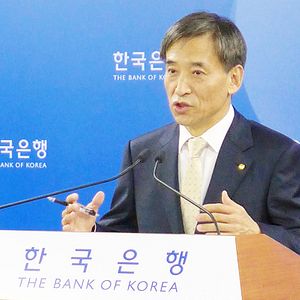In July, the U.S. Department of Commerce placed anti-dumping duties on steel tubes imported from South Korea, adding 15.75 percent on the price of steel products from Hyundai, 9.89 percent for Nexteel, and 12.82 percent for other South Korean producers. Recognizing both the country’s heavy reliance on exports and the growing demand for steel pipes amidst America’s oil boom, Seoul sought mediation at the United States’ Court of International Trade. However, the court ultimately ruled in favor of the duties on August 22.
On the surface, this appears to be a simple trade dispute, one South Korea is prone to encounter due to its massive export of goods that have insignificant demand at home, rendering the assessment of a fair market price difficult for regulators. But digging deeper, it becomes readily apparent that this most recent disagreement was merely the tip of the iceberg, hinting at a more fundamental problem affecting commerce in the Asia-Pacific region.
Some American economists criticized the Department of Commerce for pursuing a policy protecting domestic steelmakers, thereby blocking cheaper inputs from South Korean producers and diminishing the overall productivity of the U.S. economy. While this argument hits on several apt points, it ignores existing imbalances in the trans-Pacific commerce, which Washington is attempting to rectify.
The roots of the problem go back to the 1997 Asian Financial Crisis when the resources of the International Monetary Fund (IMF) proved too feeble to stem the tide of capital exiting the afflicted Asian economies. Consequentially, following the crisis, many central banks in the region adopted the policy of holding vast foreign exchange reserves to ensure their respective financial security. Seoul pursued this strategy by maintaining a weak won, which bolstered the country’s exports and enhanced its trade surplus.
This created two key problems. First, the increased demand for dollars by South Korea and many other post-crisis economies exacerbated concerns that the U.S. Treasury may be over-issuing securities, thus putting the entire global capital market at risk. It is this disequilibrium that the Department of Commerce is likely attempting to rebalance by imposing tariffs and reining in excessive trade surpluses. Second, Tokyo’s devaluation of the yen under the Abe government may spark a competitive devaluation in the region.
These concerns have led the IMF to periodically advise the South Korean government against intervening in the currency market, or at least to be more transparent in its exchange rate operations. Furthermore, the IMF has tried to ease Seoul’s concerns about the weakening yen eroding South Korea’s trade surplus. However, fears that Japanese firms, now buoyed by a more competitive currency, will move aggressively into sectors currently dominated by South Korean firms still contributed to the recent decision by the Bank of Korea to engage in expansionary monetary policy.
Japan in turn is concerned about China, which through its massively subsidized industries, eats into the country’s trade gains in several areas. Japanese shipbuilding firms appear to be particularly affected, with some analysts estimating that their market share would be nearly 30 percentage points higher without Beijing providing subsidies to Chinese shipyards. This encourages Tokyo to pursue its monetary policy to retain or regain the competitiveness of domestic producers.
Coming back to the anti-dumping duties on South Korean steel – Seoul still has the option of challenging the ruling on anti-dumping duties at the World Trade Organization (WTO); however, this is unlikely as the South Korean government is currently trying to rally Washington’s support in convincing the WTO to reduce its mandatory rice import quota for 2015.
Additionally, dealing with the steel sector alone does not fix the underlying problem arising from the region’s economic insecurities. What South Korea and the Asia-Pacific region as a whole need is Washington’s support in IMF governance reforms and the establishment of a more robust multilateral structure that protect the region from another contagious financial crisis.

































